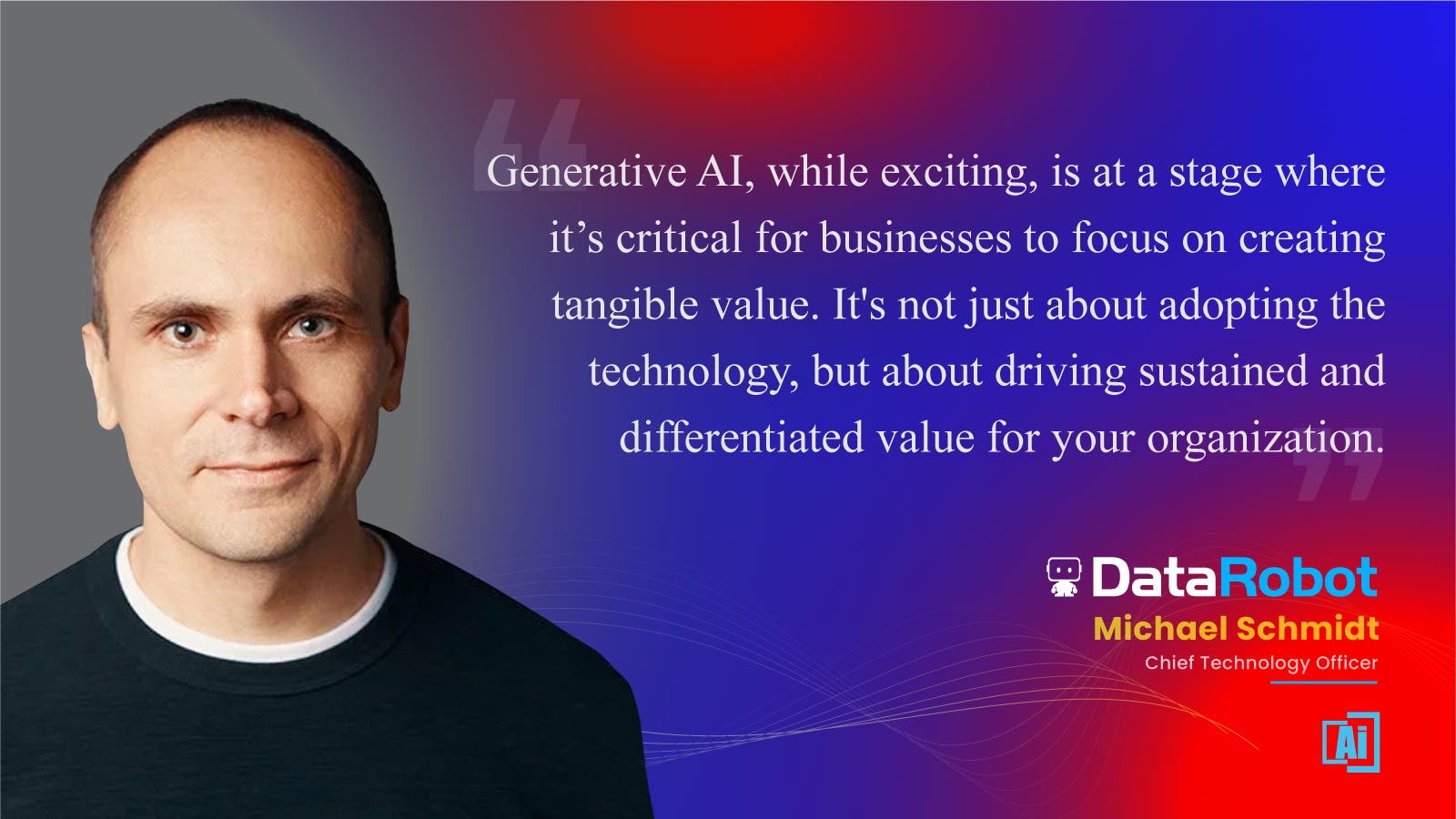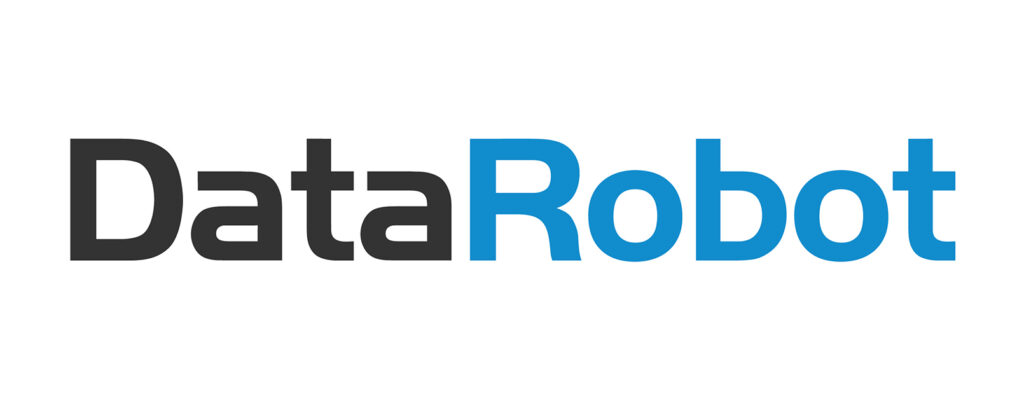AiThority Interview with Michael Schmidt, Chief Technology Officer at DataRobot

Hi, Michael. Welcome to the Interview Series. Please tell us about your current role at DataRobot and how you reached here.
As Chief Technology Officer at DataRobot, my primary responsibility is to chart the technological trajectory of the company. I’m at the helm of exploring and developing groundbreaking technologies that can enable DataRobot to consistently deliver solutions in the realm of AI and machine learning.
I’ve been with DataRobot since 2017 when it acquired Nutonian- a machine-learning company that I founded. Nutonian’s strengths in machine learning aligned seamlessly with DataRobot’s vision for the future and it’s been a great fit. I’m excited to see where we are headed next.
Though still in its infancy, Generative AI is projected to be a major game-changer in the technology industry. What are the unique business scenarios where generative AI could add more value to users?
Generative AI, while exciting, is at a stage where it’s critical for businesses to focus on creating tangible value. It’s not just about adopting the technology– but really looking at how it can drive sustained and differentiated value for your specific organization.
Companies need to identify a specific problem or use case they want to address with Gen AI- and then define what value looks like in that context. For some organizations, it may be enhancing efficiency and productivity, but for others, it may be driving new revenue and growth through innovation. Generative AI is revolutionizing the way we do business.
The most successful companies strategically grow their use-cases from simple to complex; whereas struggling organizations try to throw a hail-mary every use-case, taking on their most complex and exploratory use-cases first.
Recommended: AiThority Interview with Abhishek Shrivastava, VP of Product at LinkedIn
How should CTOs approach the whole shift to Gen AI platforms?
CTOs should approach the transition to Generative AI platforms with a clear focus on long-term sustained value. It’s tempting to get swept away by the novelty of it, but a strategic and level-headed approach is essential to long-term success.
I’m reminded of the early phases of machine learning and AI- and here we are now, years later, and many businesses are still struggling to implement AI in a way that adds real value. Businesses today are at risk of falling into this same cycle with generative AI – investing in exciting technology with huge potential that ultimately fails to deliver any real business value.
We should focus less on the technology itself and instead work backward from the value you hope to gain, whether it’s to enhance efficiency and productivity or to drive new revenue and growth.
After all, if your company can use generative AI to revolutionize its offering, can’t your competition do the same?
Finally, I think it’s important for CTOs to remain adaptable and open to evolution- and that goes for any type of innovation. Gen AI is a field that is rapidly evolving- so we need to be agile and willing to adopt new models, practices, and technologies.
You work with a wide range of customers. Could you highlight a specific use case where a Fintech company has benefitted from your AI offerings?
One of our fintech customers is Harmoney, which operates in the personal l**** market in Australasia. Harmoney matches borrowers with lenders with no need for a financial intermediary. What they found is that the more questions a prospective borrower is required to answer, the higher the drop-out rate. In order to reduce the number of questions to ask borrowers, Harmoney wanted to understand what information is predictive of default risk. That’s when they turned to DataRobot to automate the development and deployment of machine learning.
DataRobot’s AI platform empowered Harmoney’s data science and IT teams to create highly accurate predictive models and create a new Credit Risk Scorecard. Harmoney also observed a direct correlation between improved credit risk assessments and increased profitability due to fewer defaults. Work that was taking them months to model was reduced to just a few clicks with DataRobot solutions.
Please shed some light on your customer relations and how their feedback has helped you create better products and services.
We’re constantly working with our customers to get feedback on how we can better serve them and address their needs. Each DataRobot product release is directly tied to better meeting the needs of our customers. DataRobots product has acquired an enormous amount of guardrails and best practices learned from thousands of customer use cases as well.
Recommended: AiThority Interview with Rob Walker, President of Global Growth Markets at Cognizant
What are the invisible challenges of getting started with AI tools? What kind of IT infrastructure does an organization need to reap the benefits without sacrificing sustainability and revenue goals?
I mentioned earlier that defining the value you’d like Gen AI to bring to your enterprise is the first step. You need data to do this, but don’t wait until the data is perfect. Start modeling immediately to learn where signal exists and what other data is truly needed. Furthermore, once you have a good model, don’t wait until it’s perfect to start using it. Get it into production, you will learn downstream dependencies faster and be more likely to realize value in the end.
When it comes to IT infrastructure, we are seeing organizations continuing to move – or prepare to move – data and AI workloads into the cloud. Cloud deployments make it faster for AI providers to upgrade services, surface remote workers, and maintain security patches. There is, however, concern over becoming locked into a particular cloud stack given the evolving AI ecosystem. Organizations prefer to be on multiple cloud providers so they can interoperate a variety of AI technologies from different providers.
What are the true performance benchmarks to measure the effectiveness and quality of AI-assisted business operations?
When evaluating the effectiveness and quality of AI-assisted business operations, it’s imperative to look beyond just the accuracy of the models. We always want to align with our business KPIs and stay focused on what our end-goal is. We want to think about the time taken from use case idea to implementation and production, how many use cases your team can develop at once, and how many can they realistically maintain long term. If your lead practitioner leaves or gets promoted, how difficult will it be for others to pick up their use cases or even just where they left off?
Recommended: AiThority Interview with Jim Kwiatkowski, CEO at LTX, a Broadridge Company
What is your take on the future of AI amidst all the raging discussions on topics related to AI ethics, trustworthiness, and accountability? How do you see a company like DataRobot making a bigger impact on the AI industry?
The future of AI is undoubtedly going to be heavily influenced by discussions around ethics, trustworthiness, and accountability. As AI tools become more integral to decision-making across industries, ensuring they are transparent and unbiased is not just ethical, it’s essential for sustainable growth. I would love to see regulatory requirements around both explanations for individual predictions as well as detailed records and tracking of the history and lineage of how models were trained.
At DataRobot we’re well-positioned to be at the forefront of this evolution. Our expertise in automating and optimizing machine learning is just the beginning. We know that the human element in AI can not be overlooked. We believe that the technology should be deployed responsibly, and our goal is to help organizations harness the power of AI in a responsible and effective way.
Thank you, Michael ! That was fun and we hope to see you back on aithority.com soon.
[To share your insights with us, please write to sghosh@martechseries.com]
Michael Schmidt is the Chief Technology Officer of DataRobot, where he is responsible for pioneering the next frontier of the company’s cutting-edge technology. Schmidt joined DataRobot in 2017 following the company’s acquisition of Nutonian, a machine learning company he founded and led, and has been instrumental to successful product launches, including Automated Time Series. Schmidt earned his PhD from Cornell University, where his research focused on automated machine learning, artificial intelligence, and applied math. He lives in Washington, DC.
DataRobot is the leader in Value-Driven AI, a unique and collaborative approach to AI that combines an open platform, deep expertise and broad use-case experience to improve how organizations run, grow and optimize their business. The DataRobot AI Platform is the only complete AI lifecycle platform that interoperates with an organization’s existing investments in data, applications and business processes, and can be deployed on any cloud environment. Global organizations, including 40% of the Fortune 50, rely on DataRobot to drive greater impact and value from AI.


Comments are closed.